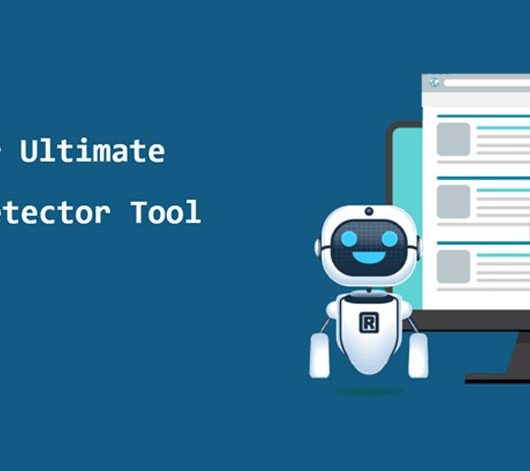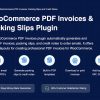Businesses face growing liability risks that often go unnoticed until it’s too late. These risks can arise from employee behaviors, customer feedback, or product failures. Many companies only identify problems after significant damage has occurred.
How can businesses stay ahead of these risks and safeguard their interests? Predictive analytics, powered by artificial intelligence, offers a solution. AI tools can spot patterns and potential issues before they turn into costly problems.
With these insights, businesses can address risks proactively. This article will explore how predictive analytics can minimize liability risks and help businesses navigate potential challenges effectively.
How AI Detects Risk Before It Escalates
IBM notes that predictive AI often gets confused with descriptive and prescriptive analytics. Descriptive analytics focuses on explaining why something happened in the past. On the other hand, predictive analytics forecasts what is likely to happen next.
AI tools rely on historical data to identify early warning signs. These systems scan operational records to detect patterns that suggest potential danger. For example, they can notice repeated delays in safety checklist submissions.
They also track when incidents happen most frequently across work environments. Patterns like these help businesses spot problems before major issues occur. Managers can then apply changes that reduce accidents or system breakdowns.
AI improves reaction time and helps avoid legal or financial damage. Predictive models also evolve with new data, making them smarter over time. This constant learning cycle supports long-term risk reduction across many industries.
How does AI contribute to environmental risk management?
AI models track environmental indicators such as carbon output, chemical use, and water levels to forecast sustainability risks. Companies use these insights to implement preventative measures like better waste management or carbon reduction strategies. Over time, this protects ecosystems and shields companies from regulatory fines.
Using Analytics to Prevent Accidents and Protect Businesses
Urban businesses face various risks tied to location and daily activity. Predictive analytics can help minimize these risks by analyzing data from multiple sources. These risks include:
- Slips, falls, and collisions in crowded environments that increase accident chances.
- Property damage resulting from accidents that lead to costly repairs.
- Liability claims that arise from injuries or damage caused by accidents.
The value extends beyond physical spaces to businesses impacted by road accidents. Delivery companies, transportation services, and other businesses reliant on roadways can greatly benefit from predictive analytics. With the right data, these businesses can predict risks and take proactive steps to protect both their operations and reputation.
The result is a safer experience for both employees and customers, with fewer accidents and liability claims.
It’s worth noting that predictive analytics works best in cities with well-documented data sets. For example, in cities like Atlanta, where road accidents and dense pedestrian activity are common, the available data can be crucial in forecasting risks.
Forbes reports that Atlanta scores 84.87 out of 100 for driving safety, ranking 11th worst in the U.S. The city experiences 16.36 fatal crashes per 100,000 residents, making it the sixth highest in the nation. Drivers in Atlanta spend an average of 33 minutes commuting, which is the sixth longest in the country.
Atlanta Personal Injury Law Firm also emphasizes that the city records a high number of injury-related claims each year. These incidents often involve business locations, retail storefronts, or areas where pedestrian and driver activity overlap. Lawyers handling these claims offer insight into why certain places see repeated injuries.
The case knowledge of Atlanta personal injury attorneys adds context to raw data. When combined with public reports and business records, legal details can help explain underlying causes.
What industries benefit most from predictive analytics in risk management?
Industries such as transportation, retail, and manufacturing benefit significantly from predictive analytics. These industries rely on daily operations that involve people, vehicles, and equipment. Predictive tools can pinpoint areas where these risks are highest, allowing businesses to implement preventive measures.
Improving Workplace Safety with Real-Time Sensor Data
Sensors on machines and gear constantly collect data about movement and use. AI reviews this data to detect when the equipment works outside normal ranges. It also spots early signs of wear and tear that increase danger.
A 2023 study published by MDPI showed real results from AI in smart manufacturing. Machine learning combined with IoT boosted anomaly detection rates by 13% in factory environments. It also brought a 3% drop in false positives, streamlining overall operations.
Safety teams can use this feedback to act before injuries occur. For instance, they might replace a machine showing signs of overheating too soon. AI can also detect patterns in how workers move during shifts.
Unusual movement could suggest fatigue or unsafe handling of materials. Businesses can then retrain staff or modify workflows to reduce stress. These proactive steps keep operations safe and minimize long-term risks.
How does AI contribute to compliance with safety regulations?
AI continuously compares sensor data and safety practices to existing OSHA or industry-specific guidelines. It flags inconsistencies such as missing gear, improper lighting, or overdue inspections. Compliance reports generated by AI streamline documentation and audit preparation, saving time and reducing legal exposure.
Letting AI Spot Complaints Before They Turn Into Crises
AI tools scan thousands of reviews and support messages for risk signals. Words like broken, unsafe, or injury often appear in early complaint patterns. These systems pick up trends faster than humans can spot them manually.
For example, repeated complaints about slippery floors could signal a serious hazard. AI also detects rising concerns in tone and emotional keywords used online. That helps companies act before complaints reach legal or media attention.
Furthermore, ResearchGate also mentions that AI-powered call analysis tracks customer satisfaction levels in real-time. It reveals service issues and highlights areas that need attention. Businesses use these insights to boost productivity and optimize team performance.
Teams can fix any problems and communicate solutions early with customers. This builds trust while preventing legal issues or bad press from escalating.
How does AI support continuous improvement in customer service?
AI identifies which policies or practices lead to repeat complaints and suggests evidence-backed changes. It also highlights successful responses that resolve issues quickly and effectively. Over time, these insights help teams develop a consistent and scalable customer service strategy.
How AI Helps High-Risk Industries Avoid Costly Mistakes
Industries like construction and healthcare face higher daily risks from operations. AI helps spot mistakes that could cause injuries or financial setbacks. For instance, it tracks errors in medical data or material handling records.
Patterns of unsafe behavior help companies correct procedures before damage is done. In logistics, AI can detect shipment delays tied to equipment faults. These early alerts prevent breakdowns and improve service reliability for customers.
Safety leaders can use this data to update training or tools quickly. AI also helps monitor compliance with laws across high-risk job categories. These improvements lower liability and increase workplace protection for everyone.
Can AI help construction sites avoid safety violations?
AI uses cameras, drones, and sensor data to monitor real-time activity on job sites. It flags noncompliance, like missing PPE or overloaded scaffolding, and suggests immediate corrective actions. This constant surveillance helps construction companies avoid regulatory fines and injury-related lawsuits.
AI-driven predictive analytics allows businesses to shift from reactive damage control to proactive risk management. It uncovers hidden patterns in large datasets, helping companies identify risks early. With this insight, businesses can take action before problems escalate, protecting both their finances and reputation.
This promotes safer environments for employees and customers. It also strengthens compliance with regulations, ensuring smooth operations. Furthermore, AI-driven analytics supports ongoing improvements in service delivery. In the long run, it builds a strong foundation for businesses to handle rising liabilities and stay ahead of risks.










